Open Journal of Pediatrics and Child Health
Disabilities of the patients, visiting the children’s clinic, at the regional center of the subarctic territory with low population density
Shapovalov KA1,2*, Shapovalova LA2, Zaboeva MV1, Arzubova IN1 and Chernikova TA1
2Komi Republican Institute for Educational Development, Syktyvkar, Komi Republic, Russian Federation
Cite this as
Shapovalov KA, Shapovalova LA, Zaboeva MV, Arzubova IN, Chernikova TA (2024) Disabilities of the patients, visiting the children’s clinic, at the regional center of the subarctic territory with low population density. Open J Pediatr Child Health 9(1): 019-032. DOI: 10.17352/ojpch.000054Copyright
© 2024 Shapovalov KA, et al. This is an open-access article distributed under the terms of the Creative Commons Attribution License, which permits unrestricted use, distribution, and reproduction in any medium, provided the original author and source are credited.A retrospective observational continuous cohort study includes an analysis of diseases that caused the onset of primary disability in 174 children of “SChCl No.3” and diseases that caused the onset of disability in 1690 children with disabilities in 2019-2021. A comparative analysis was carried out: the main dysfunctions in the state of health of children with disabilities and the leading limitations of life in the state of health of children with disabilities. (The control groups consisted of 231 children of “SChCl No.3” who received a disability for the first time and 1611 patients who were disabled in 2011-2018).
Introduction
Prevention of childhood disability and support for families raising disabled children and children with limited health capabilities are among the main priorities of the state’s medical and social services. The results of periodic, quarterly, and annual reports of medical institutions must be transformed into analytical studies, which should become statistical tools for objectifying organizational and treatment processes, including providing assistance to patients with disabilities and determining medical forces and means for the successful implementation of their individual rehabilitation programs/ habilitation. In solving the problems of preventing childhood disability, priority should be given to the development of childbirth planning services, improvement of antenatal and perinatal care, preventive work with healthy children who have developmental disabilities, the introduction of screening programs for various types of pathology, and the development of medical genetic services [1-13].
Aim
Formation of indicators and standards of primary, general disability, main health disorders, and leading limitations in the life of disabled children in the patient population of “SChCl No.3” in 2019-2021. to justify and prepare the forces and resources of a medical institution for work in 2022-2024.
Patients and methods
The study was conducted in the state budgetary healthcare institution of the Komi Republic (RK) “Syktyvkar Children’s Clinic No.3” (“SChCl No.3”), which is a united specialized clinic in the city of Syktyvkar with a capacity of 1,126 visits per shift and serves 42,079 children. The institution includes 47 pediatric sections, 2 medical outpatient clinics, an Intermunicipal Diagnostic Center, a Health Center, a rehabilitation center, and medical units in educational organizations: preschools - 69, schools - 39. 81.2% of the child population of Syktyvkar and 22, 4% of RK. Therefore, the results obtained can be extrapolated as possible not only to the entire child population of the regional center but also to the entire subarctic region of the Russian Federation (RF) with low population density.
A retrospective observational continuous cohort study included an analysis of: diseases that caused primary disability in 174 children “SChCl No.3” and diseases that caused disability in 1690 disabled children in 2019-2021. For these groups of disabled children, a comparative analysis was carried out: the main dysfunctions in the health status of disabled children and the leading limitations in life activity in the health status of disabled children. (The control groups consisted of 231 children from “SChCl No.3” who received disability for the first time and 1611 patients who were disabled in 2011-2018).
When working on the material, methodological approaches were used: systemic, complex, integration, functional, dynamic, process, normative, quantitative, administrative, and situational. Analysis methods included: historical, analytical, and comparative. The following techniques were used: grouping, absolute and relative values, detailing, and generalization. Indicators were calculated in absolute numbers, %, and Frequency Rates (FC) per 10,000 children. The results were processed by statistical methods. The arithmetic mean and standard deviation with a normal type of distribution of variables were used as the main characteristics. Qualitative characteristics were presented in the form of relative frequencies with the definition of a confidence interval. The significance of differences in quantitative characteristics between groups with a normal distribution of quantitative variables was calculated using Student’s t-tests for independent samples. The threshold error probability for statistically significant differences was set at a level of 0.05. The depth of the study was 11 years. Its organization was in the nature of stratified selection with the formation of a continuous sample. The criterion for including children in it was the completion of the state ITU service and the determination of their disability. Diseases that caused disability were considered in 19 classes of ICD X. The study population did not include disabled children with mental disorders, who in Syktyvkar are sent to a specialized medical and medical unit and undergo rehabilitation in a psychoneurological dispensary, and thus do not appear in the reports institutions.
As of January 1, 2023, the average population density in the Russian Federation was 8.55 people/km2. The Komi Republic ranks 76th in terms of population density with an indicator of 1.74. The maximum indicator in Moscow is 5116.82 (1st place), and the minimum in the Chukotka Autonomous Okrug is 0.07 (85th place). The population density in Syktyvkar is 1447.64, that is, 3.53 times less than in Moscow [14,15].
Results
Structure and frequency of primary disability of children in “SChCl No.3” in the control group 2011-2018. and 2019-2021 are presented in Figures 1,2 and Tables 1,2 [16-21]. Retrospective analysis of primary disability indicators in “SChCl No.3” in 2011-2021. allows us to make a statistically reliable (p < 0.001) forecast in 2022-2024. it will be determined in at least 58 patients of the clinic, in whom the leading pathology will be VI Diseases of the nervous system G00-G99 (15 children with a specific gravity of 25.28 ± 3.29% in the overall structure p < 0.001 and a Coefficient of Frequency (CF) of 3.46 per 10,000 patients); XVII Congenital anomalies, chromosomal disorders Q00-Q99 (9-10, 16.67 ± 2.83%, CF-2.28); IV Diseases of the endocrine system, nutritional disorders and metabolic disorders E00-E90 (9-10, 15.52 ± 2.75%, CF-2.13); XIII Diseases of the musculoskeletal system and connective tissue M00-M99 (6-7, 10.92 ± 2.36%, CF-1.50); II Neoplasms C00-D48 and VIII Diseases of the ear and mastoid process H60-H9 (4-5 each, 8.05 ± 2.06%, all p < 0.001, CF-1.10); IX Diseases of the circulatory system I00-I99 (2, 3.45 ± 1.38%, CFF0.47); III Diseases of the blood and immune system D50-D89 (1-2, 2.88 ± 1.27%, Cn-0.40); VII Diseases of the eye and its appendages H00-H59 and XIV Diseases of the genitourinary system N00-N99 (1-2 each, 2.30 ± 1.14%, CF-0.31); XI Diseases of the digestive organs K00-K93 (1-0, 1.72 ± 0.99%, CF-0.24); XIX Injuries, poisoning and other environmental influences S00-T98 (0-1, 1.15 ± 0.81%, CF-0.16). Closing this series of classes according to ICD X will be I Infectious and parasitic diseases A00-B99, X Respiratory diseases J00-J99 and XII Diseases of the skin and subcutaneous tissue L00-L99 (0-1 each, 0.57 ± 0.57%, CF-0.08).
Structure and frequency of diseases that caused disability in the control group 2011-2018. and 2019-2021 are presented in Figures 3,4 and Tables 3,4 [22-25].
There will likely be 564 disabled children in 2022-2024. the leading pathology will be VI Diseases of the nervous system G00-G99 (193, 34.27 ± 1.99%, CF-45.59); XVII Congenital anomalies, chromosomal disorders Q00-Q99 (132-133, 23.49 ± 1.78%, CF-31.26); IV Diseases of the endocrine system, nutritional disorders and metabolic disorders E00-E90 (74, 13.14 ± 1.42, CF-17.48); II Neoplasms C00-D48 (49-50, 8.76 ± 1.19%, CF-11.65); VIII Diseases of the ear and mastoid process H60-H9 (39-40, 7.04 ± 1.08%, CF-9.37); XIII Diseases of the musculoskeletal system and connective tissue M00-M99 (18, 3.20 ± 0.74%, CF-4.25); VII Diseases of the eye and its adnexa H00-H59 (17-18, 3.14 ± 0.73%, all p < 0.001, CF-4.17); III Diseases of the blood and immune system D50-D89 (8-9, 1.48 ± 0.51%, CF-1.97); IX Diseases of the circulatory system I00-I99 (7-8, 1.30 ± 0.48%, CF-1.73); XIX Injuries, poisoning and other environmental impacts S00-T98 (6-7, 1.18 ± 0.45%, CF-1.57); I Infectious and parasitic diseases A00-B99 and XI Diseases of the digestive organs K00-K93 (4-5, 0.82 ± 0.38%, CF-1.10); XIV Diseases of the genitourinary system N00-N99 (3-4, 0.65 ± 0.34%, CF-0.88); X Respiratory diseases J00-J99 (2-3, 0.41 ± 0.27%, CF-0.56); XII Diseases of the skin and subcutaneous tissue L00-L99 (1-2 each, 0.24 ± 0.21%, CF-0.32); XVI Certain conditions of the perinatal period P00-P96 (0-1, 0.06 ± 0.10%, CF-0.08).
Structure and frequency of main violations in the health status of disabled children “SDP No. 3” in the control group 2011-2018. and 2019-2021 are presented in Figure 5 and Tables 5,6 [26,27]. Of the probable 564 disabled children in 2022-2024. the main health disorders will be disorders of organs and systems (199-200, 35.44 ± 2.02%, CF-47.17), static-dynamic (170-171, 30.30 ± 1.94%, CF-40, 32), mental (82-83, 14.73 ± 1.49%, CF-19.60), sensory (57-58, 10.30 ± 1.28%, CF-13.17), language and speech (50-51, 8.99 ± 1.21%, all p < 0.001, CF-11.97), disorders caused by physical deformities (1-2, 0.24 ± 0.21%, CF-0.32), general and generalized – 0.
Structure and frequency of the leading disability in the health status of disabled children in the control group 2011-2018. and 2019-2021 for the “SChCl No.3” contingent are presented in Figures 6,7 and Tables 7,8 [28,29]. Of the probable 564 disabled children in 2022-2024. the leading limitation will be: decreased ability to self-care (224-225, 39.87 ± 2.06%, CF-53.07); decreased ability to move independently (177-178, 31.54 ± 1.95%, CF-41.97); decreased ability to learn (61-62, 10.89 ± 1.31%, CF-14.49); decreased ability to communicate (51-52, 9.17 ± 1.22%, CF-12.21); decreased ability to orient (21-22, 3.79 ± 0.80%, CF-5.04); decreased ability to control one’s behavior (17-18, 3.20 ± 0.74%, CF-4.25) and decreased ability to work (8-9, 1.54 ± 0.51%, CF-2.05, all p < 0.001) [30-36].
Discussion
The formation of indicators and standards for primary, general disability, main health disorders, and leading limitations in the life of disabled children of the patient population of the city children’s clinic of the regional center of the subarctic territory is a statistical tool that: 1) Reveals the role of indicators of disability of children for assessing and analyzing the condition children’s health; 2) Contributes to the adjustment of medical and social programs aimed at improving the health of the child population; 3) Assess the prospects for the final results of the work of the pediatric link in the health care system; 4) Allows you to foresee both the main trends in morbidity and disability of the adult population and the factors that determine them; 5) Stimulates management decision making [37-47].
Rehabilitation of disabled children in “SChCl No.3” is carried out on the basis of the city rehabilitation center, where more than 22,000 medical visits are carried out per year. The number of procedures provided to patients for all types of treatment exceeds 120,000 units. The number of primary patients per year is more than 2000 people. The department has day hospitals with 39 beds: neurological (23); otorhinolaryngological (5); pediatric (4); surgical (3); allergic-pulmonological (2) and ophthalmological (2) profile. The average length of stay for children in a rehabilitation center is 10-15 days. The main technologies used in the rehabilitation center: 1) KINESOTHERAPY: Physical therapy; Correction in the “Adele” and “Gravistat” suit; Dry pool; soft modular blocks; Various exercise machines: treadmill, rowing, exercise bike. 2) PHYSIOTHERAPY: Electrotherapy; Light therapy (including laser therapy); Thermotherapy; Vibration therapy; Magnetotherapy; Aerosol therapy. 3) REFLEXOTHERAPY: MRI; Foot therapy. 4) HYDROTHERAPY: Therapeutic swimming; Hydromassage. 5) THERAPEUTIC MASSAGE classic: General; Segmental; Spot; Local, etc. 6) PHYTOTERANY. 7) AEROION THERAPY. 8) AROMATHERAPY. 9) PSYCHOLOGICAL AND Speech Therapy DIAGNOSTICS AND CORRECTION: Individual; Group. 10) CONDUCTIVE PEDAGOGY: Fine motor skills; Montessori method; Role-playing games; Estheto-ergo-iso-zoo-agrotherapy. 11) MUSIC THERAPY + ART THERAPY. 12) METHOD OF CORRECTION SEND0B|rGO (“Sensory room”). 13) COMPUTER biofeedback, biological functional control. 14) SCHOOL OF HOME FAMILY REHABILITATION - a new highly effective technology.
Rehabilitation work with a contingent of disabled children in “SChCl No.3” is carried out according to the following main blocks: I. Medical rehabilitation sets the following goals: 1) Restoration of impaired functions of the child’s body by stimulating reparative and compensatory processes; 2) Formation of an attitude towards the inclusion of the damaged organism in life; 3) Prevention of complications of chronic and colds. Medical rehabilitation is carried out in combination with other blocks of rehabilitation of children on the principles of 1) Individual approach, taking into account the characteristics of the clinical prognosis and the age of the child; 2) Complexity (drug treatment, orthopedic and surgical correction, physiotherapeutic procedures, massage, swimming pool, exercise therapy) and sequence; 3) Medical monitoring of the results of rehabilitation measures (pediatricians at the rehabilitation center and clinic, neurologist, psychiatrist, orthopedist). II. Psychological rehabilitation aims to form, restore, and develop various types of mental activity, mental functions, qualities, and formations that allow the child to successfully adapt to the environment and society; accept and fulfill appropriate social roles, and achieve a high level of self-realization. Psychological rehabilitation included: 1) Psychodiagnostics: a) Features of the child’s current development; b) Forecasting the possibilities of its development; c) Assessment of indications for rehabilitation; d) Determination of optimal options for methods, techniques, and means of rehabilitation; e) Psychological counseling of children and parents; 2) Psychotherapy: a) Correction of intellectual development deficits; b) Training of basic mental functions: memory, thinking, attention; c) Development of self-control and self-regulation skills; d) Formation of communication skills; e) Increased resistance to stress; 3) Psychocorrection: a) Psychotraining; b) Relaxation; c) Psycho-gymnastics. Psychological rehabilitation is carried out by taking into account the psycho-physical characteristics and capabilities of children in a playful way with elements of puppet therapy and fairy tale therapy. During the classes, various teaching materials, toys, and technical aids (tape recorder, video equipment) are used. III. Correctional pedagogical work includes: 1) Helping children socialize within the limits given by the nature of the defect; adapting them to broad participation in work; 2) Identification of the child’s potential capabilities and determination of the “zone of proximal development”, taking into account psychophysical and age characteristics; 3) Development of speech, thinking, motor sphere, emotional and personal qualities; 4) Formation of the child’s personality; 5) Correction and maximum development of children’s cognitive characteristics; 6) Formation of compensatory ways of understanding the surrounding reality; 7) Development of intact aspects of cognitive activity; 8) Formation of prerequisites for children to master lesson materials, consolidation of this material; 9) Achieving the maximum possible rehabilitation to practical life in the environment. IV. Working with parents, methodological work sets the following goals: 1) Drawing up an individual multidisciplinary rehabilitation program for each child, based on differential diagnosis, determining the child’s rehabilitation potential, means, and methods of rehabilitation; 2) Special training for parents to carry out rehabilitation activities in the family; 3) The desire to help most fully through the prism of correctional work, adaptation and integration of children into the normal working and social environment of healthy people, as well as to create an opportunity for self-realization, maximum use of one’s abilities, to promote the child’s feeling of usefulness, and to create a sense of joy in life in sick children; 4) Help children become as independent as possible. For this purpose, “SChCl No.3” solves the main tasks: 1) Providing advisory assistance to parents with children with disabilities on issues of care, education, communication, and child development; 2) Teaching parents to communicate and play with children, to understand their child; 3) Psychological assistance and support for parents; 4) Joint classes of a speech pathologist with parents and a child; 5) Joint holidays with parents (for example, “Mom’s beloved”, “Easter”, “Friendly family”, “Christmas”, etc.); 6) Relaxation evenings for mothers and their children are regularly organized and held [48-59]. From the moment of birth of a child with symptoms of perinatal damage to the C.N.S. in the perinatal and postnatal periods, not only intensive treatment is carried out, but also early rehabilitation therapy aimed at restoring the functional activity of the nervous system. When drawing up individual rehabilitation programs, pediatricians distinguish two rehabilitation lines: 1) main and 2) auxiliary. Complex treatment carried out within the framework of individual rehabilitation/habilitation programs for disabled children makes it possible to completely restore health in 4.77% of patients, improve the condition in up to 5.77%, and stabilize the pathological process in up to 90.24%. Worsening of the condition occurs in 0.44% - 1.28% due to the progression of the disease [60-70].
Conclusion
The results of periodic, quarterly, and annual reports of medical institutions need to be transformed into analytical studies, which should become statistical tools for objectifying organizational and treatment processes, including providing assistance to patients with disabilities and determining medical forces and means for the successful implementation of individual rehabilitation/habilitation programs. Analysis of primary disability in “SChCl No.3” in 2011-2021. allows us to make a statistically reliable (p < 0.001) forecast in 2022-2024. it will be determined in at least 58 patients of the clinic, in whom the leading pathology will be VI Diseases of the nervous system G00-G99 (15 children with a specific gravity of 25.28 ± 3.29% in the overall structure p < 0.001 and a frequency of 3.46 per 10,000 patients); XVII Congenital anomalies, chromosomal disorders Q00-Q99 (9-10, 16.67 ± 2.83%, CF-2.28); IV Diseases of the endocrine system, nutritional disorders and metabolic disorders E00-E90 (9-10, 15.52 ± 2.75%, CF-2.13); XIII Diseases of the musculoskeletal system and connective tissue M00-M99 (6-7, 10.92 ± 2.36%, CF-1.50); II Neoplasms C00-D48 and VIII Diseases of the ear and mastoid process H60-H9 (4-5 each, 8.05 ± 2.06%, all p < 0.001, CF-1.10); IX Diseases of the circulatory system I00-I99 (2, 3.45 ± 1.38%, CF-0.47); III Diseases of the blood and immune system D50-D89 (1-2, 2.88 ± 1.27%, CF-0.40); VII Diseases of the eye and its appendages H00-H59 and XIV Diseases of the genitourinary system N00-N99 (1-2 each, 2.30 ± 1.14%, CF-0.31); XI Diseases of the digestive organs K00-K93 (1-0, 1.72 ± 0.99%, CF-0.24); XIX Injuries, poisoning and other environmental influences S00-T98 (0-1, 1.15 ± 0.81%, CF-0.16). Closing this series of classes according to ICD X will be I Infectious and parasitic diseases A00-B99, X Respiratory diseases J00-J99 and XII Diseases of the skin and subcutaneous tissue L00-L99 (0-1 each, 0.57 ± 0.57%, CF-0.08). There will likely be 564 disabled children in 2022-2024. the leading pathology will be VI Diseases of the nervous system G00-G99 (193, 34.27 ± 1.99%, CF-45.59); XVII Congenital anomalies, chromosomal disorders Q00-Q99 (132-133, 23.49 ± 1.78%, CF-31.26); IV Diseases of the endocrine system, nutritional disorders and metabolic disorders E00-E90 (74, 13.14 ± 1.42, CF-17.48); II Neoplasms C00-D48 (49-50, 8.76 ± 1.19%, CF-11.65); VIII Diseases of the ear and mastoid process H60-H9 (39-40, 7.04 ± 1.08%, CF-9.37); XIII Diseases of the musculoskeletal system and connective tissue M00-M99 (18, 3.20 ± 0.74%, CF-4.25); VII Diseases of the eye and its adnexa H00-H59 (17-18, 3.14 ± 0.73%, all p < 0.001, CF-4.17); III Diseases of the blood and immune system D50-D89 (8-9, 1.48 ± 0.51%, CF-1.97); IX Diseases of the circulatory system I00-I99 (7-8, 1.30 ± 0.48%, CF-1.73); XIX Injuries, poisoning and other environmental impacts S00-T98 (6-7, 1.18 ± 0.45%, CF-1.57); I Infectious and parasitic diseases A00-B99 and XI Diseases of the digestive organs K00-K93 (4-5, 0.82 ± 0.38%, CF-1.10); XIV Diseases of the genitourinary system N00-N99 (3-4, 0.65 ± 0.34%, CF-0.88); X Respiratory diseases J00-J99 (2-3, 0.41 ± 0.27%, CF-0.56); XII Diseases of the skin and subcutaneous tissue L00-L99 (1-2 each, 0.24 ± 0.21%, CF-0.32); XVI Certain conditions of the perinatal period P00-P96 (0-1, 0.06 ± 0.10%, CF-0.08). Their main health problems will be disorders of organs and systems (199-200, 35.44 ± 2.02%, CF-47.17), static-dynamic (170-171, 30.30 ± 1.94%, CF- 40.32), mental (82-83, 14.73 ± 1.49%, CF-19.60), sensory (57-58, 10.30 ± 1.28%, CF-13.17), linguistic and speech (50-51, 8.99 ± 1.21%, all p < 0.001, CF-11.97), disorders caused by physical deformities (1-2, 0.24 ± 0.21%, CF-0,32), general and generalized - 0. The leading limitations will be: decreased ability to self-care (224-225, 39.87 ± 2.06%, CF-53.07); decreased ability to move independently (177-178, 31.54 ± 1.95%, CF-41.97); decreased learning ability (61-62, 10.89 ± 1.31%, CF-14.49); decreased ability to communicate (51-52, 9.17 ± 1.22%, CF-12.21); decreased ability to orient (21-22, 3.79 ± 0.80%, CF-5.04); decreased ability to control one’s behavior (17-18, 3.20 ± 0.74%, CF-4.25) and decreased ability to work (8-9, 1.54 ± 0.51%, CF-2.05, all p < 0.001). The generated indicators and standards of primary, general disability, main health disorders, and leading limitations in the life of disabled children of the patient population of the city children’s clinic of the regional center of the subarctic territory is a statistical tool for everyday use to objectify the rehabilitation process, their comparative assessment and determination of the strength and means of a medical institution for successful follow-up of patients, as well as forecasting possible statistically reliable indicators of childhood disability in the near future.
For the period from 2011 to 2021. primary disability in “SChCl No.3” increased in absolute terms by 5.0 times from 12 to 60 people and a growth rate of 500.00%. The frequency of primary disability increased by 1.66 times from 8.58 per 10,000 patients to 14.26, the growth rate was 166.20%. The expected trend will determine the further increase in the number of disabled children. Quantitative and qualitative analysis of indicators of primary disability, diseases that caused disability in children, main health disorders, and leading limitations in the life of patients in “SChCl No.3” in 2011-2021. allows us to make a correct, statistically reliable forecast of probable childhood disability in 2022-2024.
In this regard, it is necessary to ensure large-scale development and steady improvement in the quality of medical and genetic counseling assistance to the population of reproductive age. It is important to ensure the priority development of the prenatal diagnosis of emerging pathologies and congenital defects, primarily compatible with life, for their possible further correction, as well as the active introduction of modern technologies for high-quality nursing and rehabilitation of newborns.
Extension of the state program “Maternity Capital” in order to increase the birth rate in the Russian Federation requires ensuring the rapid development of the material and technical base of pediatric outpatient and inpatient institutions. Each municipality needs to have institutions for the rehabilitation treatment of children, and in the regional center - a multidisciplinary network of such institutions. Provide every child in need with a voucher for treatment in a specialized sanatorium.
Despite the improvement in the ability to care for low birth weight children and children with critical body weight at birth, they are the risk groups for serious deviations as the body grows and develops. At the same time, attention should be paid to the increase in children with chronic pathologies who require medical rehabilitation and the decrease in the number of school-age children with health groups I and II.
The reserves for reducing primary disability of children should be considered: Increasing the effectiveness of the implementation of preventive programs for childhood disability by expanding the range of mass (screening) examinations of children for congenital and hereditary pathologies; Equipping federal and regional medical genetic centers and consultations with modern equipment for prenatal diagnosis; Increasing the level of professional training of specialists.
Effective work with high-risk families on timely decision-making to prevent the birth of a disabled child at the present stage of crisis economic phenomena in the Russian Federation must be considered as the main one, although it requires thoughtful, painstaking work of medical personnel with future parents. The economic costs of the preventive work of a practicing physician are minimal compared to the implementation of the above reserves. It is important to convince parents of the possibility of having a healthy child in the future and the difficulties of correcting the already existing severe prenatal pathology of the organism developing in the womb. A serious argument can be the belief that there are limited opportunities for a disabled child to have a quality life after the passing of their aged parents in the absence of other selflessly interested relatives.
- Grinina OV. Disability as a multifactorial problem. Healthcare of the Russian Federation. 1993; (12):8-16.
- Baranov AA. Problems of childhood disability: scientific and information support. Healthcare of the Russian Federation. 1995; (3):27-30.
- Grishina LP, Talalaeva ND, Amirova EK. Analysis of disability in the Russian Federation for 1970-1999. and its forecast until 2015. Medical and social examination and rehabilitation. 2001; (2):27-31.
- Baranov AA, Albitsky VYu, Zelinskaya DI. Disability of the children's population in Russia. M.: Center for the Development of Intersectoral Programs. 2008; 1-208.
- Baranov AA, Namazova-Baranova LS, Terletskaya RN, Antonova EV. Problems of childhood disability in modern Russia. Vestnik RAMN. 2017; (4):305-312. DOI: 10.15690/vramn823
- Verigina GB. Dynamics of disability of the child population of the Russian Federation for 2012-2018. (information and analytical material). Medico-social problems of disability. 2019; (3):62-76: 112-119.
- Engle PL, Black MM, Behrman JR, Cabral de Mello M, Gertler PJ, Kapiriri L, Martorell R, Young ME; International Child Development Steering Group. Strategies to avoid the loss of developmental potential in more than 200 million children in the developing world. Lancet. 2007 Jan 20;369(9557):229-42. doi: 10.1016/S0140-6736(07)60112-3. PMID: 17240290.
- Kerac M, Chagaluka G, Kett M, Groce N, Bunn J. Impact of disability on survival from severe acute malnutrition in a developing country setting – a longitudinal cohort study. Archives of Disease in Childhood. 2012; (97):A43-A44. DOI: 10.1136/archdischild-2012-301885.107/
- Shapovalov KA. Analysis of the work of the methodical cabinet of the GBUZ RK “Syktyvkar Children's Polyclinic №3” in 2016-2018. Syktyvkar: GBUZ RK "SСP №3". 2019; 1-138.
- Shapovalov КА, Shapovalova LA. Standard of primary disability for city children’s clinic of regional centre of subarctic territory. Archives of Disease in Childhood (The Journal of the Royal College of Paediatrics and Child Health) 8th Europaediatrics Congress jointly held with The 13th National Congress of Romanian Pediatrics Society 7-10 June 2017, Palace of Parliament, Bucharest, Romania. Paediatrics building bridges across Europe. 2017; 102(Suppl 2):A114. DOI: 10.1136/archdischild-2017-313273.296
- Shapovalov КА, Katorkin VI, Antonova SG, Osipova TYu. Lean Clinic project. An integrated methodological approach to optimizing the work of the registration office of the city children's polyclinic. Detskaya medicina Severo-Zapada. Materials of the IV National Congress with international participation Healthy children - the future of the country. 2020; 8(1):379-380. https://gpmu.org/userfiles/file/journals/Detskaya_medicina/!!!det_med_2020_1.pdf
- Shapovalov K, Shapovalova L, Yastrebtseva T, Gusarova S, Bairova E. Disabled children. Standards of primary, general disability, major violations in health status and leading disability of disabled children in city children's polyclinic of regional center of subarctic territory. Pediatrics. Eastern Europe. 2017; 5(3):254-269. http://recipe.by/ru/magazine/deti/?editions=2017-tom-5-n-3&group_id=item_0&article_id=line_3
- Shapovalov KA, Shapovalova LA, Popova IA, Lebedev VS, Arzubova IN. Primary disability of the patient contingent of the city children's polyclinic in 2016-2020. Children's medicine of the North-West (Detskaya medicina Severo-Zapada). Materials of the V National Congress with international participation "Healthy children - the future of the country.2021; 9(1):397-400. https://gpmu.org/userfiles/file/%D0%9A%D0%9E%D0%9D%D0%93%D0%A0%D0%95%D0%A1%D0%A1/2021/det_med_2021_1.pdf
- Population density of the constituent entities of the Russian Federation. (accessed 05.03.2024)].
- Syktyvkar. 2024. https://ru.wikipedia.org/wiki/%D0%A1%D1%8B%D0%BA%D1%82%D1%8B%D0%B2%D0%BA%D0%B0%D1%80
- Shapovalov KA. Analysis of the work of the methodical cabinet of the GBUZ RK Syktyvkar Children's Polyclinic №3 in 2019-2021. Syktyvkar: GBUZ RK SСP №3. 2022; 1-175.
- Shapovalov KA, Shapovalova LA, Zaboeva MV, Kalinina TA, Toropova OE. Features of the formation of disability among contingent of the city children`s polyclinic of the regional center of the subarctic territory. Yakut Medical Journal. 2018; (1):58-62. DOI: 10.25789/YMJ.2018.61.18
- Shapovalov K, Shapovalova L, Slutsky S, Chugaev A, Katorkin VP. 283 Pediatrics Of Disasters. Preparation of Doctors of the City Polyclinic to Work in Conditions of Emergencies and Terrorist Acts. Archives of Disease in Childhood. Faculty of Paediatrics of the Royal Colledge of Physicians of Ireland. 9th Europaediatrics Congress. 13-15 June, Dublin, Ireland. 2019; 104(Suppl3):A270. DOI:10.1136/archdischild-2019-epa.633
- Shapovalov K, Shapovalova L, Zaboeva M, Chicherova O, Nelipovich N, Saitova OP. 315 Medical Support of Compliance With the Standards of Physical Culture and Sports Complexes By a Contingent of Patients of the City Children’s Clinic As A Marker of the Physical Development of Children and Adolescents of the Subarctic Territory. Archives of Disease in Childhood. Faculty of Paediatrics of the Royal Colledge of Physicians of Ireland. 9th Europaediatrics Congress. 13-15 June, Dublin, Ireland. 2019; 104(Suppl3):A283-284. DOI: 10.1136/archdischild-2019-epa.664
- Shapovalov K, Shapovalova L, Yastrebtseva T, Gorbitskaya M, Semyannikova N, Avtushina K. P316 General Disability of Patients of the City Children’s Polyclinic of the Subarctic Territory. Archives of Disease in Childhood. Faculty of Paediatrics of the Royal Colledge of Physicians of Ireland. 9th Europaediatrics Congress. 13-15 June, Dublin, Ireland. 2019; 104(Suppl3):A284. DOI: 10.1136/archdischild-2019-epa.665
- Shapovalov КА, Karakozova NG, Petrova IV, Kaneva LN, Smirnova TV, Ozerova IV. Organization of periodic internal examination of outpatient support for patients in need of palliative care in the city children's clinic. Collection of works of the XXII Congress of Pediatricians of Russia with international participation Actual problems of pediatrics. Moscow. 2020; 238. www.pediatr-russia.ru - Moscow: Union of Pediatricians of Russia. http://pediatr.dataforum.pro/upload/Tezisi_VSP_2020.pdf (accessed 05.03.2024)]
- Shapovalov KA, Shapovalova LA, Gileva NA, Finchuk VV, Shalaeva AL. The structure and frequency of morbidity in patients of the city children's polyclinic with pathology included in the regional segment of the federal register 14 nosologies. Children's medicine of the North-West (Detskaya medicina Severo-Zapada). Materials of the V National Congress with international participation Healthy children - the future of the country. 2021; 9(1):401-402. https://gpmu.org/userfiles/file/%D0%9A%D0%9E%D0%9D%D0%93%D0%A0%D0%95%D0%A1%D0%A1/2021/det_med_2021_1.pdf
- Shapovalov КА, Shapovalova LA, Zaboeva MV, Chicherova OP, Klochkova MS, Nelipovich NM, Saitova OYu. On medical examinations of children and adolescents to meet the standards of the All-Russian physical culture and sports complex Ready for work and defense" in the city children's clinic of the subarctic territory. Geneva: World Health Organization (Pubrights). 2021; 5:1-19.
- Shapovalov KA. The first experience of forming a report on the professional activities of the head of the methodological office of the State Budgetary Healthcare Institution of the Republic of Komi Syktyvkar Children's Polyclinic No. 3 from February 27, 2016 to February 26, 2021 for accreditation in the specialty Organization of health care and public health. Syktyvkar. 2021; 1-20.
- Shapovalov КА, Shapovalova LA, Zaboeva MV, Toropova OE, Avtushina KA, Kalinina TA. Collection of abstracts of the XIX Congress of Pediatricians of Russia with international participation Actual problems of pediatrics. Moscow, March 5-7, 2022. Moscow: Union of Pediatricians of Russia, 2022:305. Russian Pediatric Journal. 2022; 3(1):344. https://www.rospedj.ru/jour/article/view/504/434
- Shapovalov KA, Shapovalova LA, Gorbitskaya MS, Semyannikova NA, Lapshina YuV. Disabled children. Formation of the standards of primary and general disability, the main violations in the state of health of children with disabilities of a contingent of patients of the city children's polyclinic of the regional center of the subarctic territory. Pediatric Bulletin of the South Ural. 2017; (2):81-87. http://xn--74-dlcmpmt5aj.xn--p1ai/vestnik/v2017_2.pdf
- Shapovalov КА, Shapovalova LA, Poluyanova VR, Luzina NV, Shalaev AS. The main functional disorders in the health status of disabled children of the city children's polyclinic of the subarctic territory. Detskaya medicina Severo-Zapada. Materials of the IV National Congress with international participation Healthy children - the future of the country. 2020; 8(1):381-383. https://gpmu.org/userfiles/file/journals/Detskaya_medicina/!!!det_med_2020_1.pdf
- Shapovalov K, Shapovalova L, Yastrebtseva Т, Toropova О, Kantsarina L, Kostareva EP. 314 Leading Disabilities in the State of Health as a Sign of Reducing the Quality of Life of Children with Disabilities in the City’s Children’s Polyclinic. Archives of Disease in Childhood. Faculty of Paediatrics of the Royal Colledge of Physicians of Ireland. 9th Europaediatrics Congress. 13-15 June, Dublin, Ireland. 2019; 104(Suppl3):A283. DOI: 10.1136/archdischild-2019-epa.663
- Shapovalov KA, Shapovalova LA, Popova IA, Arzubova IN. Garipova DV. Leading restrictions on the life of disabled children of the contingent of patients of the city children's polyclinics of the subarctic territory. XXIII Congress of Russian Pediatricians with International Participation Actual Problems of Pediatrics. Moscow, March 5-7, 2021 Collection of materials of the Congress www.pediatr-russia.ru Moscow: Union of Pediatricians of Russia. 2021; 252. https://www.pediatr-russia.ru/information/kongressy-i-sezdy-pediatrov/2021/Tezisi_VSP_2021.pdf
- Shapovalov KA, Shapovalova PK. The working program of the discipline «Legal bases of medical-social expertise» for the specialty 0202 Law and organization of social security. CD. Syktyvkar, Komi State Pedagogical Institute, Syktyvkar Higher Pedagogical College №1 after I.A. Kuratov. 2000; 1-21.
- Shapovalov KA, Shapovalova PK. The legal basis of medical-social expertise: training manual. CD. Syktyvkar, Komi State Pedagogical Institute, Syktyvkar Higher Pedagogical College №1 after I.A. Kuratov. 2000; 1-47.
- Shapovalov KA, Shapovalova PK. Public service and institutions of medical and social expertise: lecture. Syktyvkar, Komi State Pedagogical Institute, Syktyvkar Higher Pedagogical College №1 after I.A. Kuratov. 2000; 1-10.
- Shapovalov KA, Shapovalova PK. Classification and criteria used for the carrying out of medical-social expertise: lecture. Syktyvkar, Komi State Pedagogical Institute, Syktyvkar Higher Pedagogical College №1 after I.A. Kuratov. 2000;1-24.
- Shapovalov KA, Shapovalova PK. Disability and the individual program of rehabilitation of the disabled person: lecture. Syktyvkar, Komi State Pedagogical Institute, Syktyvkar Higher Pedagogical College №1 after I.A. Kuratov. 2000; 1-4.
- Shapovalov KA, Shapovalova PK. The social integration of the disabled: lecture. Syktyvkar, Komi State Pedagogical Institute, Syktyvkar Higher Pedagogical College №1 after I.A. Kuratov. 2000; 1-6.
- Shapovalov КА, Shapovalova LA, Makarova NM, Gusarova SA, Semyannikova NA, Dobrisavlevich EN, Avtushchina KA. Dynamics of the provision of public services for the issuance of directions for the passage of medical and social expertise and the assessment of the level of satisfaction with its quality by the patients of the city children's clinic. Collection of works of the XXI Congress of Pediatricians of Russia with international participation “Actual problems of pediatrics”. Moscow, February 15-17, 2019. www.pediatr-russia.ru Moscow: Union of Pediatricians of Russia. 2019; 272. https://www.pediatr-russia.ru/information/kongressy-i-sezdy-pediatrov/2019/tezisi2019.pdf
- Vashchenko LV, Ravlinko AA, Rubashnaya OF Childhood disability and disability from childhood as a medical and social problem. Child Health. 2008; (2):11.
- Baindurashvili AG, Solovyova KS, Zaletina AV. Disability of the Russian child population due to injuries and diseases of the musculoskeletal system. Genius Orthopedics. 2013; (1):5-8.
- Anaeva LA, Zhenishev RA, Krymukova MA, Atskanova BL. Dynamics of prevalence and nosological structure of childhood disability in Kabardino-Balkaria. Basic Research. 2014; (9-10):1680-1684.
- McConachie H, Huq S, Munir S, Ferdous S, Zaman S, Khan NZ. A randomized controlled trial of alternative modes of service provision to young children with cerebral palsy in Bangladesh. J Pediatr. 2000 Dec;137(6):769-76. doi: 10.1067/mpd.2000.110135. PMID: 11113832.
- McConachie H, Huq S, Munir S, Kamrunnahar, Akhter N, Ferdous S, Khan NZ. Difficulties for mothers in using an early intervention service for children with cerebral palsy in Bangladesh. Child Care Health Dev. 2001 Jan;27(1):1-12. doi: 10.1046/j.1365-2214.2001.00207.x. PMID: 11136337.
- Green SE. "We're tired, not sad": benefits and burdens of mothering a child with a disability. Soc Sci Med. 2007 Jan;64(1):150-63. doi: 10.1016/j.socscimed.2006.08.025. Epub 2006 Oct 2. PMID: 17014946.
- Shapovalov K, Shapovalova P, Makarova N, Gusarova S, Semyannikova N, Dobrisavlevich E, Avtushchina KP. 26 Assessment of the Quality of Passage and the Level of Satisfaction with the Receipt of the State Service of Passing Medical and Social Expertise (Ssmse) to Children and Adolescents. Archives of Disease in Childhood. Faculty of Paediatrics of the Royal Colledge of Physicians of Ireland. 9th Europaediatrics Congress. 13-15 June, Dublin, Ireland. 2019; 104(Suppl3):A166. DOI: 10.1136/archdischild-2019-epa.382
- Shapovalov KA, Shapovalova PK, Makarova NM, Gusarova SA, Semyannikova NA, Dobrysavlevich EN, Avtushina KA. Assessment of the quality of state services of medical and social expertise by patients of the city children's clinic. Pediatric Bulletin of the South Ural. 2019; (2):7-17. DOI: 10.34710/Chel.2020.2.2.001
- Shapovalov KA, Shapovalova PK, Makarova NM, Gusarova SA, Semyannikova NA, Dobrysavlevich EN, Avtushina KA. The volume and quality of state services of medical and social examination for patients of the city children's polyclinic. Geneva: World Health Organization (Pubrights). 2021; May 11:1-19.
- Shapovalov КА, Shapovalova LA. Control over execution of individual program of rehabilitation and (or) habilitation of children with disabilities. experience of city children’s clinic of regional centre of subarctic territory. Archives of Disease in Childhood (The Journal of the Royal College of Paediatrics and Child Health) 8th Europaediatrics Congress jointly held with The 13th National Congress of Romanian Pediatrics Society 7-10 June 2017, Palace of Parliament, Bucharest, Romania. Paediatrics building bridges across Europe. 2017; 102 (Suppl 2) A114-A115. DOI: 10.1136/archdischild-2017-313273.296
- Shapovalov КА, Shapovalova LA, Knyazeva NG, Toropova VS, Sannikova LA, Mezentseva AS, Pokhodyaeva GYu. Analysis of the implementation of the individual program of rehabilitation and/or habilitation of children with disabilities (IPRA) of the city children's polyclinic of the regional center of the subarctic territory. Collection of works of the XXI Congress of Pediatricians of Russia with international participation “Actual problems of pediatrics”. Moscow, February 15-17, 2019. www.pediatr-russia.ru Moscow: Union of Pediatricians of Russia. 2019; 273. https://www.pediatr-russia.ru/information/kongressy-i-sezdy-pediatrov/2019/tezisi2019.pdf
- Albitsky VYu, Vinyarskaya IV. Possibilities of using quality of life criteria to assess the health status of children. Russian Pediatric Journal. 2007; (5):54-56.
- Yakovleva TV, Baranov AA. State policy in the field of child health: problems and objectives. Issues of modern pediatrics. 2009; 8(2):6-12.
- Skok NI. On the issue of the impact of limited human health on adaptation. Bulletin of Chelyabinsk State University. 2014; (13):120-124.
- Golikov NA. Disabled children: disability, integration, inclusion. Theory and Practice of Social Development. 2015; (3):16-19.
- Cunningham RD Jr. Delay in referral to early-intervention services. Pediatrics. 2004 Sep;114(3):896; author reply 896. doi: 10.1542/peds.2004-0941. PMID: 15342873.
- Wirz S, Edwards K, Flower J, Yousafzai A. Field testing of the ACCESS materials: a portfolio of materials to assist health workers to identify children with disabilities and offer simple advice to mothers. Int J Rehabil Res. 2005 Dec;28(4):293-302. doi: 10.1097/00004356-200512000-00001. PMID: 16319554.
- Ho LY. Child development programme in Singapore 1988 to 2007. Ann Acad Med Singap. 2007 Nov;36(11):898-910. PMID: 18071596.
- Shapovalov K, Shapovalova L, Pokhodyaeva G, Knyazeva N, Toropova V, Sannikova L, Mezentseva AP. 313 Individual Program of Rehabilitation and/or Habilitation of Disabled Children (ipra). Results of its Execution in the City Children’s Clinic. Archives of Disease in Childhood. Faculty of Paediatrics of the Royal Colledge of Physicians of Ireland. 9th Europaediatrics Congress. 13-15 June, Dublin, Ireland. 2019; 104(Suppl3):A282-283. DOI: 10.1136/archdischild-2019-epa.662
- Shapovalov KA, Shapovalova LA, Knyazeva NG, Pokhodyaeva GYu, Toropova VS, Sannikova LА, Mezentseva AS. The results of the implementation of the individual program of rehabilitation and (or) habilitation of children with disabilities (IPRA) in the city children's clinic. Geneva: World Health Organization (Pubrights). 2021; 12:1-24.
- Shapovalov КА, Shapovalovа LA, Katorkin VI, Zaboeva MV, Arzubova IN. Forecast of the structure of diseases of the disabled contingent of the city children's polyclinic. Forcipe. Materials of the VI National Congress with international participation "Healthy children - the future of the country." June 1-3, 2022 St. Petersburg. 2022; 5(Supl.2):552-554. https://gpmu.org/userfiles/file/journals/Forcipe/2022_%D0%A2ezisy%20zdor%20deti_Forcipe_s2.pdf
- Shapovalov КА, Shapovalova LA, Zaboeva MV, Toropova OE, Avtushina KA, Kalinina TA. Collection of abstracts of the XIX Congress of Pediatricians of Russia with international participation Actual problems of pediatrics. Moscow, March 5-7, 2022. Moscow: Union of Pediatricians of Russia, 2022:305. Russian Pediatric Journal. 2022; 3(1):344. https://www.rospedj.ru/jour/article/view/504/434 (accessed 29.08.2022)]
- Shapovalov KA, Shapovalova LA, Katorkin VI, Zaboeva MV, Arzubova IN. Prognostic value of long-term monitoring of children's disability to determine the forces and means of rehabilitation measures of the city children's polyclinic of the regional center of a subarctic territory with low population density. Pediatric Bulletin of the South Ural. 2023; (1):12-28. DOI: 10.34710/Chel.2023.22.98.002
- Shiranovich MP, Tkachenko VS. Model of the regional level of the state service for the rehabilitation of people with disabilities (Work experience). Medical and social examination and rehabilitation of disabled people. 1997; (6):1-88.
- Korobov MV, Dubinina IA. Problems of organizing the public service of medical and social examination at the present stage. Medical and social examination and rehabilitation of disabled people. 1999; (3):3-5.
- Zelinskaya DI, Baleva LI. Childhood disability. M.: Medicine. 2001; 1-136.
- Algood CL, Harris C, Hong JS. Parenting success and challenges for families of children with disabilities: An ecological systems analysis. Journal of Human Behavior in the Social Environment. 2013; 23(2):126-136.
- Aron LY, Loprest PJ, Urban I. Meeting the needs of children with disabilities. Washington, DC: Urban Institute Press; 2007.
- Alwin DF. Integrating varieties of life course concepts. J Gerontol B Psychol Sci Soc Sci. 2012 Mar;67(2):206-20. doi: 10.1093/geronb/gbr146. Epub 2012 Mar 7. PMID: 22399576; PMCID: PMC3307990.
- Anderson DK, Liang JW, Lord C. Predicting young adult outcome among more and less cognitively able individuals with autism spectrum disorders. J Child Psychol Psychiatry. 2014 May;55(5):485-94. doi: 10.1111/jcpp.12178. Epub 2013 Dec 9. PMID: 24313878; PMCID: PMC5819743.
- Ananth P, Melvin P, Feudtner C, Wolfe J, Berry JG. Hospital Use in the Last Year of Life for Children With Life-Threatening Complex Chronic Conditions. Pediatrics. 2015 Nov;136(5):938-46. doi: 10.1542/peds.2015-0260. Epub 2015 Oct 5. PMID: 26438707; PMCID: PMC4621793.
- Shapovalov KA, Shapovalova LA, Katorkin VI, Zaboeva MV, Arzubova IN. The main results of monitoring the disability of the patient population of the city children's clinic of the regional center of the subarctic territory with low population density. Geneva: World Health Organization (Pubrights). 2023; 15:1-40.
- Shapovalov KA, Shapovalova PK, Makarova NM, Gusarova SA, Semyannikova NA, Dobrysavlevich EN, Avtushina KA. The quality of medical and social expertise of the contingent of children with disabilities in the City Children’s Polyclinic. Open J Pediatr Child Health. 2023; 8(1): 033-038. DOI: 10.17352/ojpch.000049
- Shapovalov КА, Katorkin VI. Project Lean Clinic. Practical Results in the Work of the Registry of a City Children's Clinic. Journal of Pediatrics and Neonatal Medicine. 2023; 5(3):1-8. DOI: 10.36266/JPNM/182
Article Alerts
Subscribe to our articles alerts and stay tuned.
 This work is licensed under a Creative Commons Attribution 4.0 International License.
This work is licensed under a Creative Commons Attribution 4.0 International License.
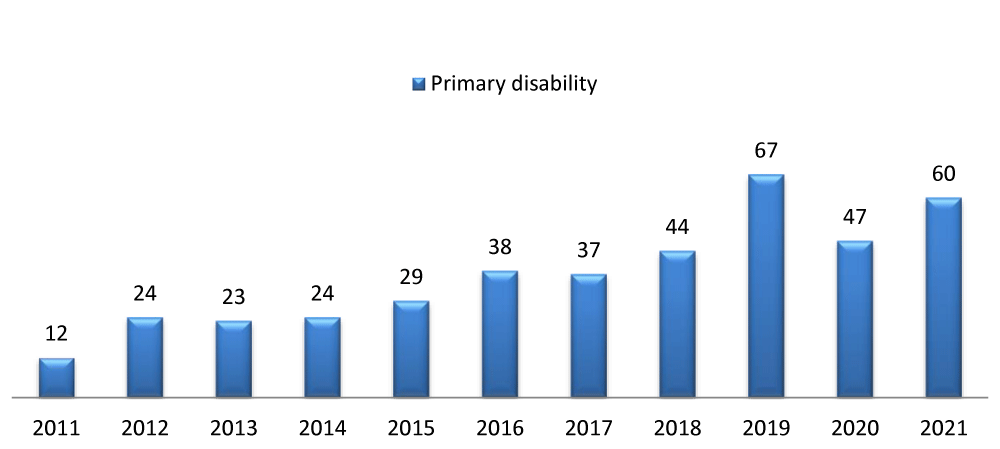
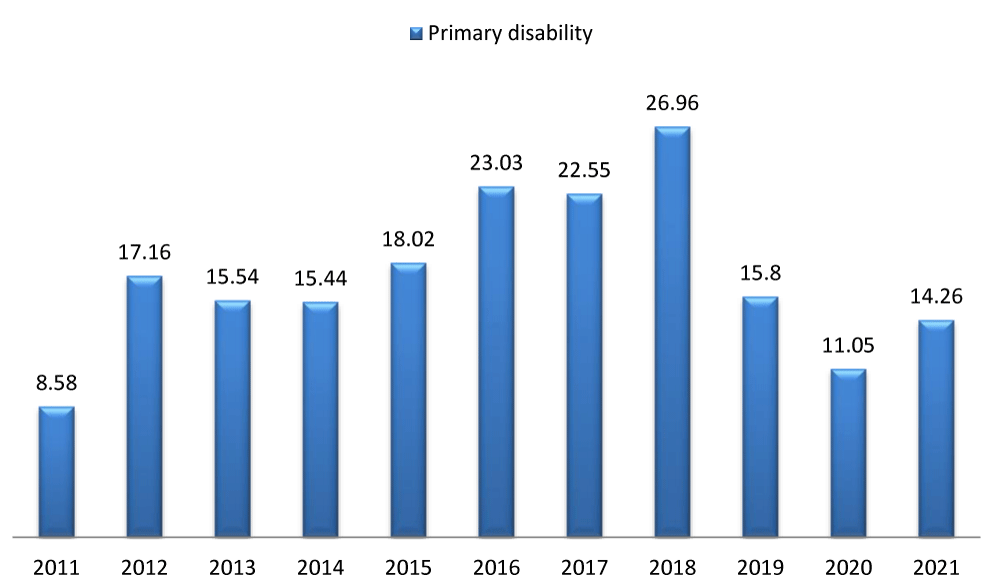
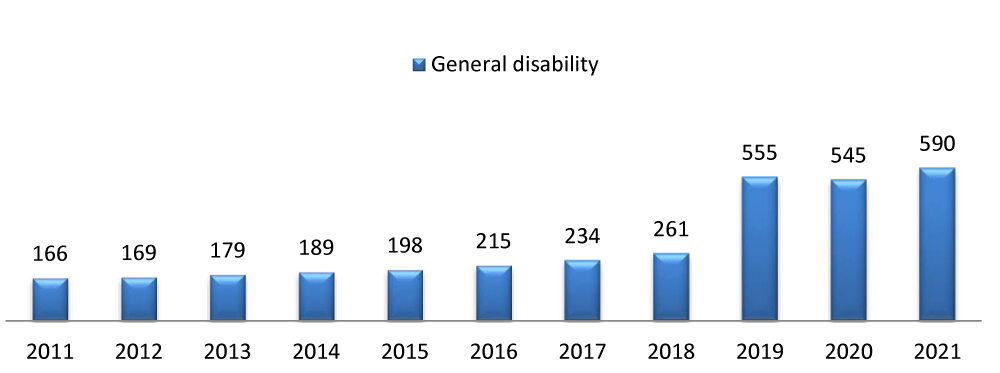
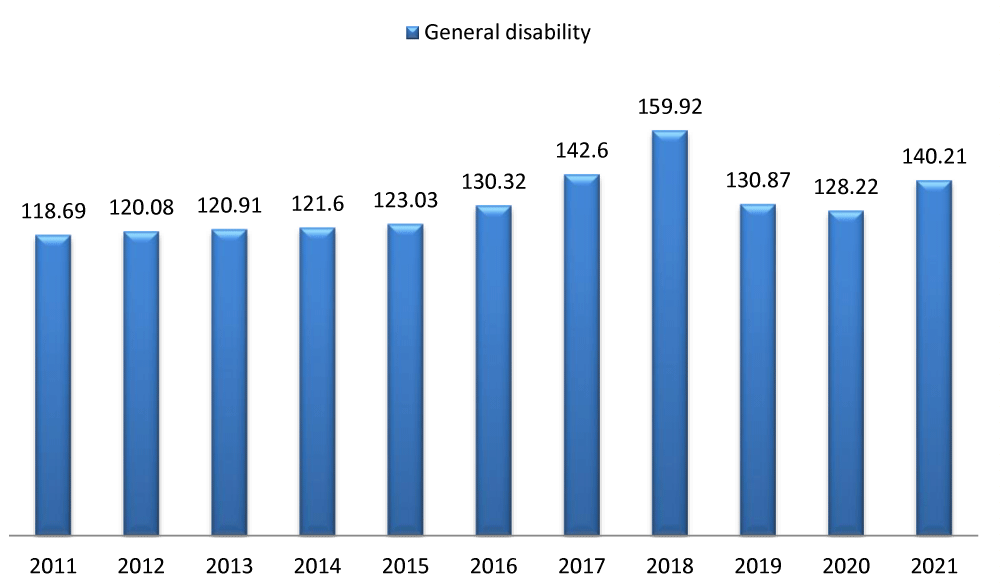
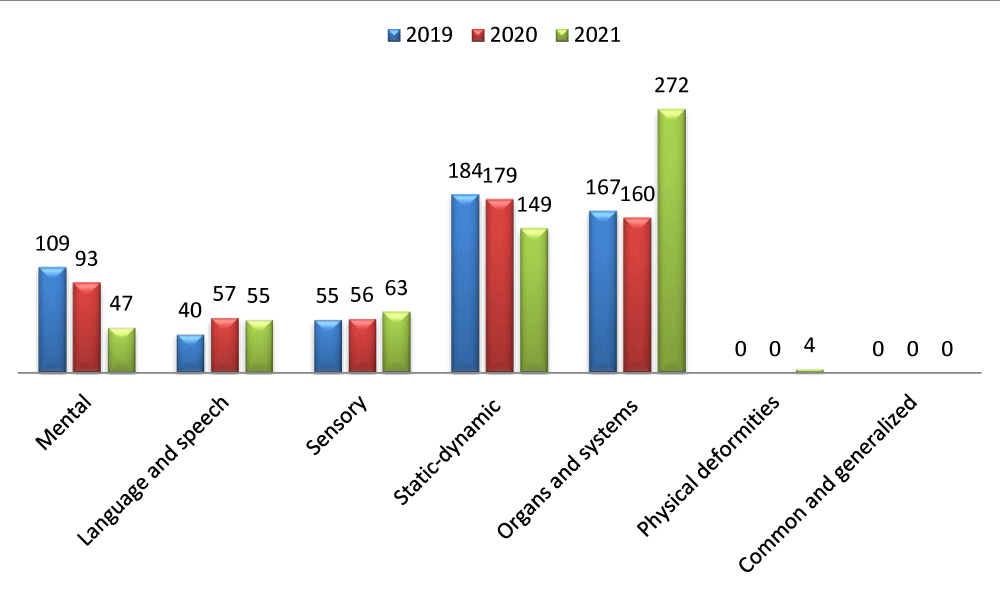
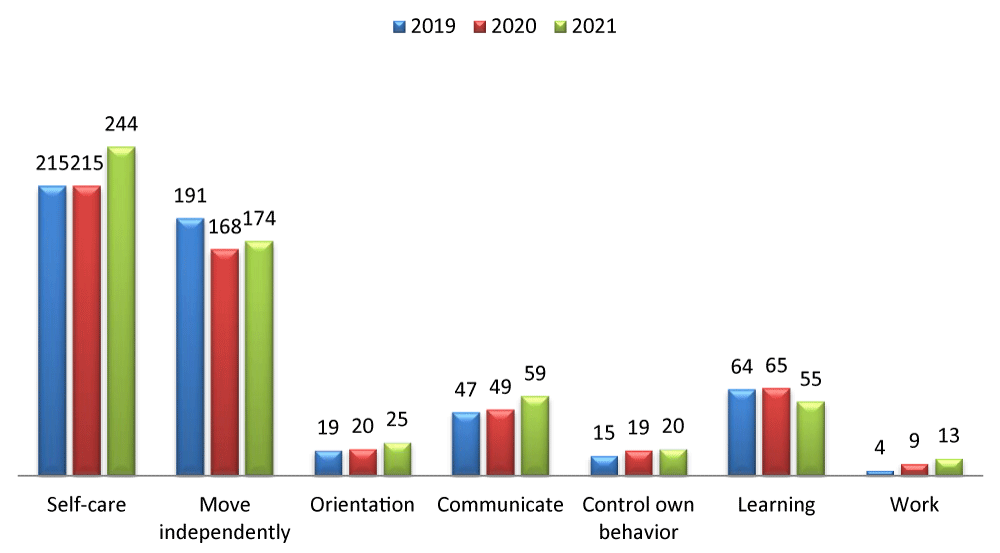
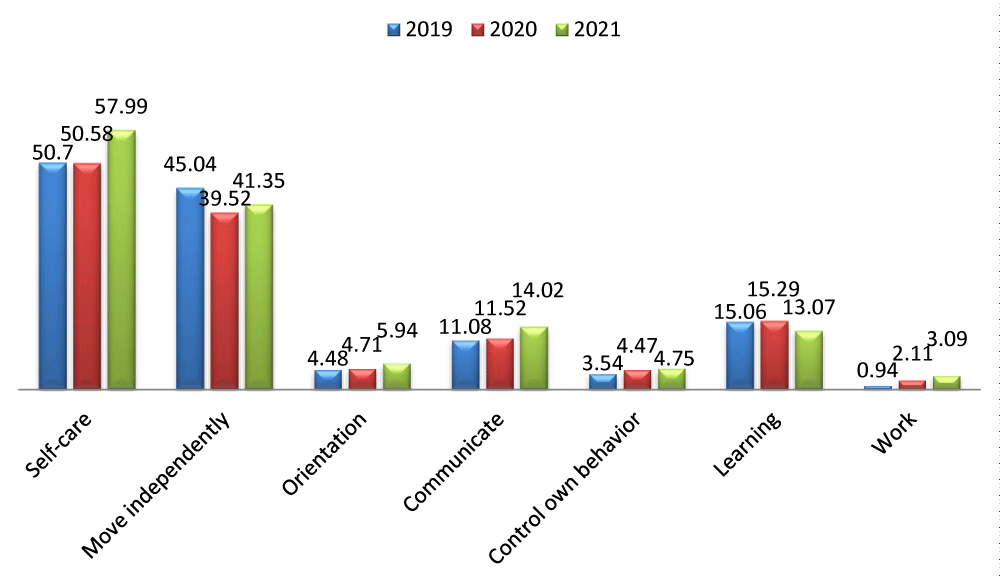

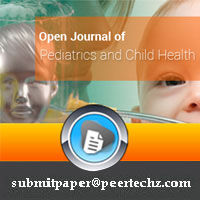
 Save to Mendeley
Save to Mendeley
